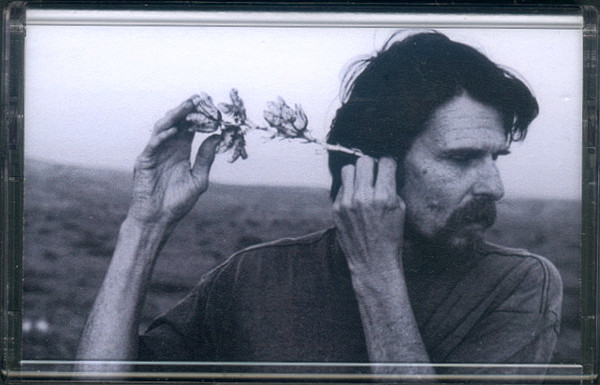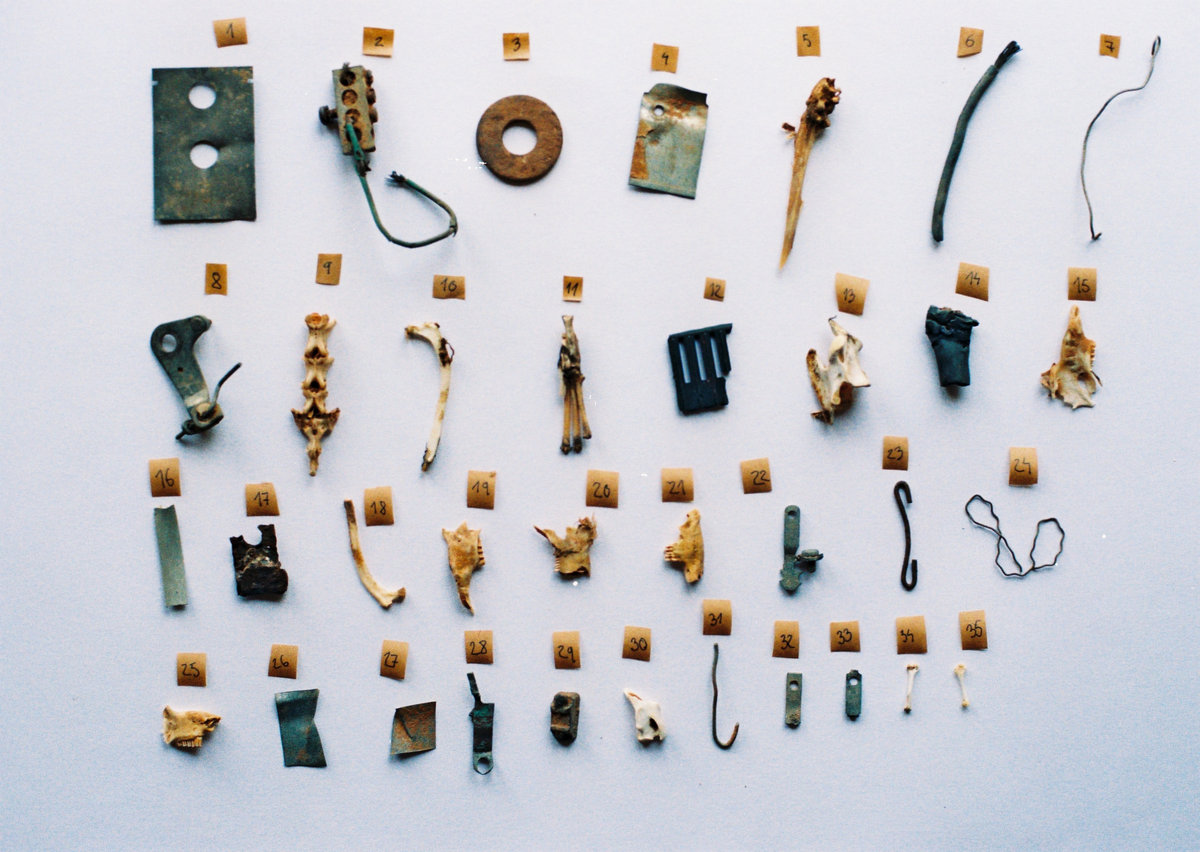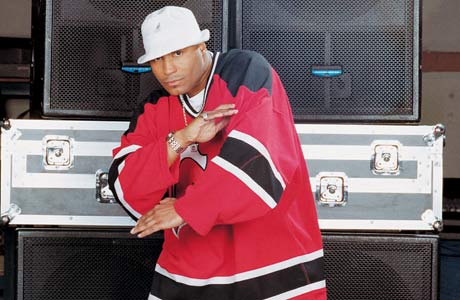Wednesday Investigations [2:15]: Blind spots, part two
Twenty-four albums from the Eighties
![Wednesday Investigations [2:15]: Blind spots, part two](/content/images/size/w1200/2025/05/jeph-jerman.jpg)
Last time, I wrote about a “blind spots” project I have been doing this summer—where I go, year by year, through the history of recorded music, and try to investigate albums that I’ve never heard (or, at the very least, never owned). In that last installment, I documented a decade’s worth of finds: 21 albums, beginning in 1972 (the year of my birth) and going up to 1982. I’ve been continuing the project, and today I bring you the remainder of the 1980s, a catalog of twenty-four mostly new-to-me records, along with some selected annotations. Enjoy?
1982: The Cure, Pornography
Last time, we left off with The Cure’s Faith (1981), the middle album in their so-called “gloomy trilogy.” So we start off this installment by finishing off the trilogy. Moving on from there—
1982: Nurse With Wound, Homotopy to Marie
1982: Lydia Lunch, 13.13
1982: Cocteau Twins, Garlands
Cocteau Twins are best known for their shimmering, incandescently pretty music—early forays into to what would later come to be called “dream pop.” If you try to unpick the network of influences that originated the “dream pop sound” you can come up with a kind of throughline, starting with “ethereal wave,” which grows out of gothic rock: dig further back and you see gothic rock growing out of post-punk. Cocteau Twins’ best-known late work has nearly fully obscured this lineage beneath its abundant supply of color and frills: one of the reasons to go back and listen to this fun, edgy debut is that it’s a way of uncovering those post-punk roots. (It’s probably bassist Will Heggie who really brings that skittering energy to the table—and he would leave the band before the release of their second LP.)
1983: AMM, Generative Themes
Terrific performance by this venerable British free improvisation group: the first album from what would ultimately become the triumphantly long-running AMM configuration of Keith Rowe (guitar), Eddie Prévost (percussion), and John Tilbury (piano). Twenty-two years after this release, in 2015, Rowe would go into semi-retirement, following a Parkinson’s diagnosis—his final solo performance on guitar is captured here—but he was still performing with AMM until as recently as 2019, and a 2022 duo of Rowe and Prévost ended up paired with a solo Tilbury recording and offered as a (seemingly final) AMM release.
Anyway, this album is an important document in the history of free improvisation and I was a little bit surprised to see that it is not available as a legal digital download anywhere. After deciding I wanted it in my collection, I ended up ordering it as a CD direct from Prévost’s own Matchless Recordings. (Much of the Matchless material, including most of the AMM catalog, has been made digitally available by London’s Cafe Oto; I don’t know why this one got passed over.)
1983: Cybotron, Enter
Note index says: “widely considered to be where Detroit techno began.” That’s via Pitchfork (they gave the reissue of this an 8.7, if that matters to you). Fans of early cyberpunk should check this out—it predates Gibson’s Neuromancer by a year but the two really share a vibe.
1983: Sonic Youth, Confusion is Sex
Beautifully messy early entry. Gloriously disreputable even forty years later.
1984: John Duncan, Riot
Transgressive early noise album. Hard to find this one too—it was originally released on Duncan’s own label when he was living in Tokyo. It’s been reissued a bunch of times (most recently a vinyl-only remastered version in 2018) but the last time it existed on CD was 1990 and as far as I know no legal digital download is available. As with many of the hard-to-find things on this list, I had to resort to listening via a YouTube rip. I have more to say about that, below.
1984: Chris & Cosey, Songs of Love & Lust
1984: AMM, Combine & Laminates
This documents a 1984 performance at the Arts Club of Chicago, which is still around (and is in fact within walking distance of where I am writing). It was not formally released until 1990, which means it’s in the wrong spot in this chronology, but I’ll keep it here to let the mistake stand in the record. Apologies for the inconvenience.
1984: Harold Budd, Abandoned Cities
A lot of folks know Budd best as a collaborator of Brian Eno’s, most notably on The Plateaux of Mirrors (1980), released as the second album in Eno’s genre-defining Ambient series. Budd’s piano playing on that record (and many others) is not to everyone’s taste—it’s pretty gauzy, even syrupy—but he has more range than he’s often given credit for. Critic David Toop holds up Abandoned Cities as one interesting outlier in Budd’s discography: an album of “ominous drift,” comprised of “cold slabs of opaque color.” Budd died of complications from COVID in 2020.
1985: Bill Frisell, Rambler
1985: Coil, Scatology
1986: This Mortal Coil, Filligree and Shadow
A “dream pop” magnum opus: a massive 21 track double-album with nearly 30 musicians, many of them well-known from other art-rock acts of the time. Simon Raymonde, the bassist who replaced Will Heggie in the Cocteau Twins, is here; so is Peter Ulrich, the percussionist from Dead Can Dance; so are members of Breathless and Colorbox. An enormously assured and marvelously executed release, standing like a monumental waypoint-marker at the center of this particular scene.
1986: Evan Parker, The Snake Decides
Enormously convoluted saxophone solo improvisation, an absolute labyrinth of sound, facilitated by Parker’s justifiably famous circular breathing technique. Initially released on Derek Bailey’s Incus label, which is also digitally preserved, at least in part, by Cafe Oto. You won’t find this on Oto’s Incus page, though, presumably because Oto chose The Snake Decides for reissue on their own in-house label, Otoroku. This release is a delight, and many of the other Otoroku reissues and releases are also well worth investigating. And speaking of Bailey and Parker…
1986: Spontaneous Music Ensemble, Quintessence
…how about we check out this recording from 1974 (released in 1986)? My note index cites critic Kris Vanderstraeten: “these 85 minutes of music created by John Stevens (percussion, cornet), Derek Bailey (guitars), Kent Carter (cello and bass) and soprano saxophonists Evan Parker and Trevor Watts stand as one of the greatest, perhaps the greatest, documents of free improvisation, full stop, period.” Released on the Emanem label, just one entrant from their enormous catalog of great improvisational recordings. If you’ve been following the theme that runs through this installment of the newsletter, though, it may not surprise you to learn that this critically important catalog never made the leap to digital downloads, and, sadly, its online CD shop closed up when label head Martin Davidson died last year.
In order to listen to Quintessence, then—“perhaps the greatest document of free improvisation”—I once again resorted to a YouTube rip, a solution which makes me more uneasy each time I take advantage of it. 20th century free improvisation may not be everyone’s bag, but I do feel like its history and legacy deserves careful maintenance. Cafe Oto can’t come to the rescue every time, and while we can treat YouTube as an “archive of last resort” it seems like the worst kind of folly to treat it as a long-term solution.
You can turn to the file-sharing services, sure—there’s an argument to be made, and some are making it, that pirates are the new archivists—but I think listeners deserve a less illicit method. I believe in the power of institutions to do good work here, but the evidence for this belief is pretty dire: yes, most libraries still maintain a small collection of haphazardly curated CDs, but the declining popularity of the format means that few do it in a sustained way, and, yes, there are some important jazz archives out there, but as far as I know there is no library or university collection that takes the history of free improvisation a central focus. It’s moments like this where I fantasize about quitting my job and founding a nonprofit devoted to the preservation of experimental music.
Don’t provoke me; one of these days I’ll do it.
1987: Spacemen 3, The Perfect Prescription
1987: Eric B. & Rakim, Paid in Full
1988: Hands To, Scrine
A project of certified weirdo Jeph Jerman. From the note index (quoting the Notice Recordings description of their reissue): “Jeph Jerman is a respected and significant player in the mid-to-late-‘80s American cassette scene¹, his prolific Hands To project dwelling in the non-representational, highly textural, abstracted field recording realm of sound work during that time […] Featured throughout are uncomfortable layers of blown-out and magnified object abuse, some of which were gleaned from a junkyard and alley behind Jerman’s apartment at the time in Colorado Springs. Here he recalls a few insights about various approaches to some of the recording techniques on this album: ‘I remember doing quite a bit of ‘guerrilla recording’, things like tossing tape decks off buildings or putting them inside running clothes dryers … whirling the mic overhead like a lasso and adding some plastic crunching and squeaking. … inching tape: pulling it over the play head manually. … an old shop sign which screeched and got blown about by the wind.’”


1988: My Bloody Valentine, Isn’t Anything
Shoegaze is approaching.
1988: Ultramagnetic MC's, Critical Beatdown
Featuring a young Kool Keith.

1989: Spacemen 3, Playing With Fire
1989: Lush, Scar EP
1989: Anthony Braxton with the Northwest Creative Orchestra, Eugene (1989)
That winds up the 1980s. Over at Bluesky, I have progressed all the way up to 2000, so you can keep up with the project there, or you can wait for the next installment of this newsletter, which will share the results of my investigations into my blind spots from the 1990s. In the meantime, why don’t you tell me what you think is your favorite album that you’ve yet to hear? I want to know!
Peace.
—JPB, writing from Chicago, IL on Wednesday, August 7
Another scene that would benefit from a sustained and organized preservationist effort. ↩
![Wednesday Investigations [2:14]: Blind spots](/content/images/size/w960/2025/05/takehisa-kosugi.jpg)
![Wednesday Investigations [2:13]: Andrew CS](/content/images/size/w960/2025/04/andrew-cs.jpg)